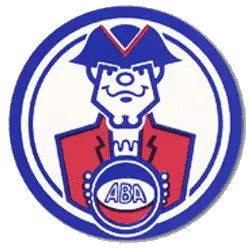

I am a sucker for all things American Basketball Association. (Listen to my interview with historian Theresa Runstedtler about her book Black Ball: Kareem Abdul Jabbar, Spencer Haywood, and the Generation That Saved the Soul of the NBA). I was too young to remember Julius “Dr. J.” Erving’s stint with the ABA’s Virginia Squires, but I have plenty of Squires cards in my old basketball collection, including Willie Sojourner (the guy who gave Erving his “Dr. J” nickname), Jim “Jimbo” Eakins, Neil “The Enforcer” Johnson, George Carter, George Irvine, and Dave Twardzik. I am still looking for a George “Iceman” Gervin card from the 1972-1973 Squires season and Doug Moe and Charlie Scott cards from the 1971-72 season.
Here is writer Dan Diamond at The Washington Post offering some historical context for a possible Washington Wizards move to Virginia:
“The Virginia Squires weren’t playing to packed stadiums, but the arenas weren’t empty, either,” Brett L. Abrams and Raphael Mazzone wrote in their 2013 book, “The Bullets, the Wizards, and Washington, DC Basketball.” The newly branded team made its debut on Oct. 17, 1970, in Roanoke, and more games would follow in Hampton, Richmond and Salem. By the end of the season, attendance in Virginia was roughly double what the team had been drawing in Washington.
The team’s strength was its on-court talent. Led by players like Erving and Charlie Scott — another player who would one day make basketball’s Hall of Fame — the Squires contended for the ABA title in their first two seasons in Virginia.
But by the Squires’ third season, 1972-1973, the chaos afflicting much of the ABA had begun to consume them, too. Scott had abruptly left the team, frustrated with the second-tier league and seeking NBA stardom. The Squires struggled to pay rent and players, and slid to a .500 record.
Erving’s departure followed the next season, effectively dooming the Squires to irrelevance for their remaining existence. Across the next three years, the franchise would compile a combined 58-193 record — a .230 winning percentage — and set the mark for the two worst individual seasons in the league’s short history. In the 1975-76 season, the Squires rotated through five coaches in 81 days: Al Bianchi (who compiled a 1-6 record), Bill Musselman (0-6), Mack Calvin (4-22), Jack Ankerson (1-1) and Zelmo Beaty (9-33).
The team also suffered off-court travails. The team’s starting center, David Vaughn, was chased by police in July 1975 as he drove away from a gas station; Vaughn had filled up his tank with $14 worth of gas but didn’t stop to pay.
“What a sight it must have been if [the 6-foot-11-inch Vaughn], as they allege, kept standing up frequently, protruding his upper body through a sun roof and throwing things,” Byron Rosen wrote in The Washington Post. The chase ended after multiple police cars boxed in Vaughn’s vehicle and a policewoman shot him in the abdomen — accidentally, the officer said.
The long-awaited merger between the NBA and ABA finally arrived in June 1976 — but the Squires were not among the four teams invited to join the more established league. That’s because the Squires did not exist anymore; the ABA had canceled its Virginia franchise one month earlier, after a series of missed payments.
Foreman’s bet that relocating his team to Virginia would pay off with NBA riches had failed, but he was long gone too, having sold the Squires for about $1 million in 1974. A wire service reported that Foreman was “relieved” to have rid himself of the team.
Read the entire piece here.
Basketball is soccer with hands. Soccer is basketball with feet.
Both games are, sadly, poorly designed: Too many people moving around at once.